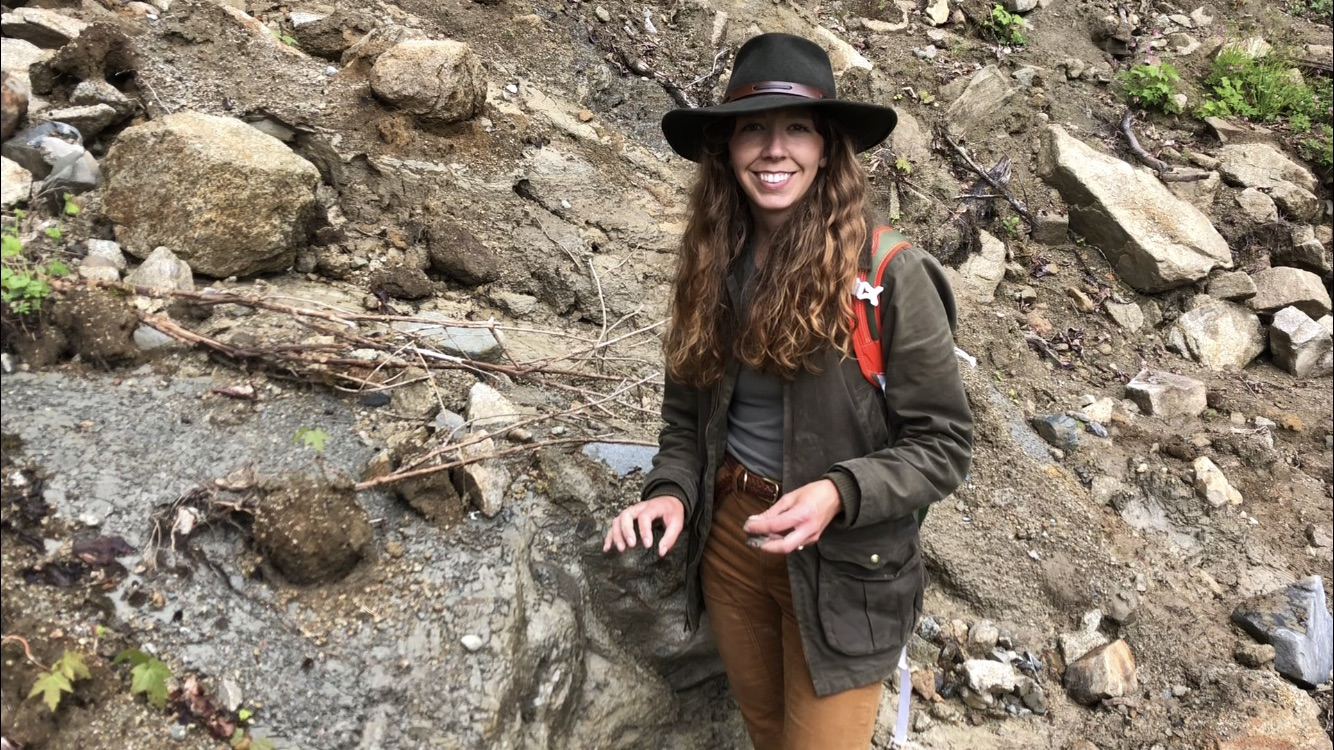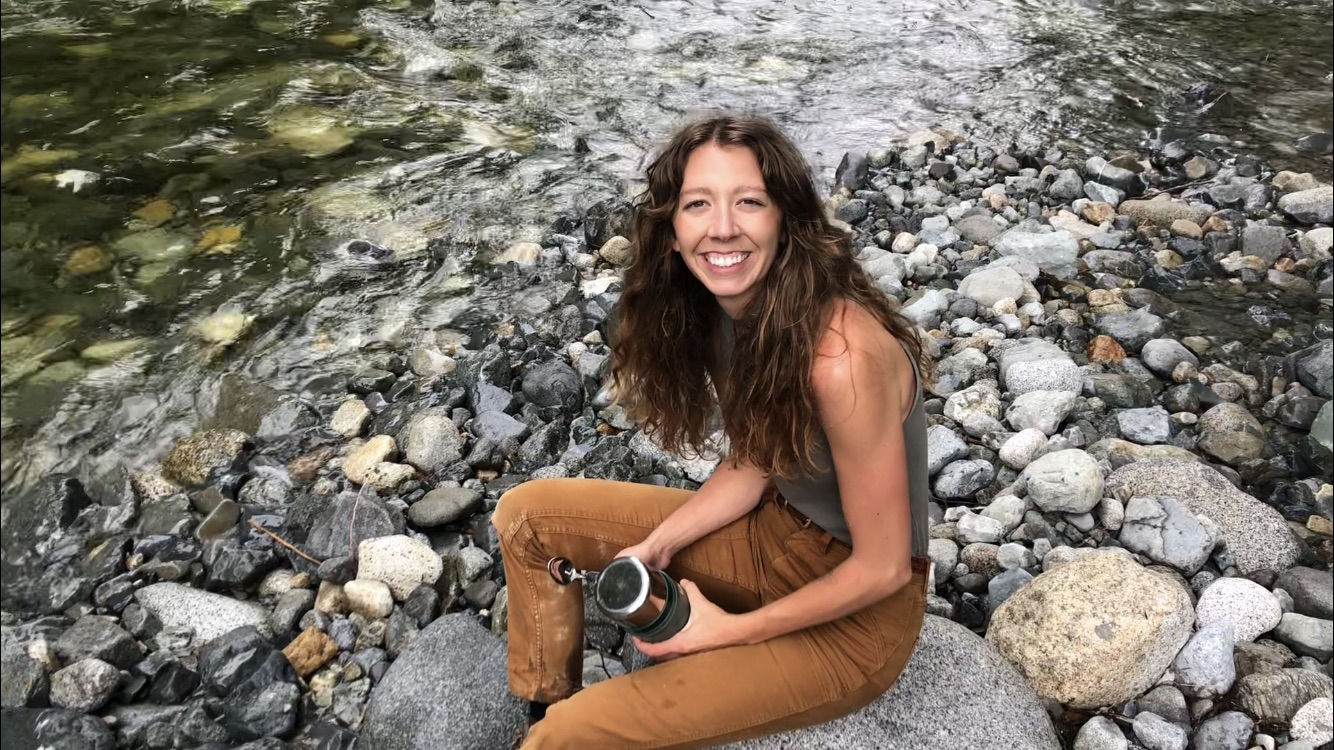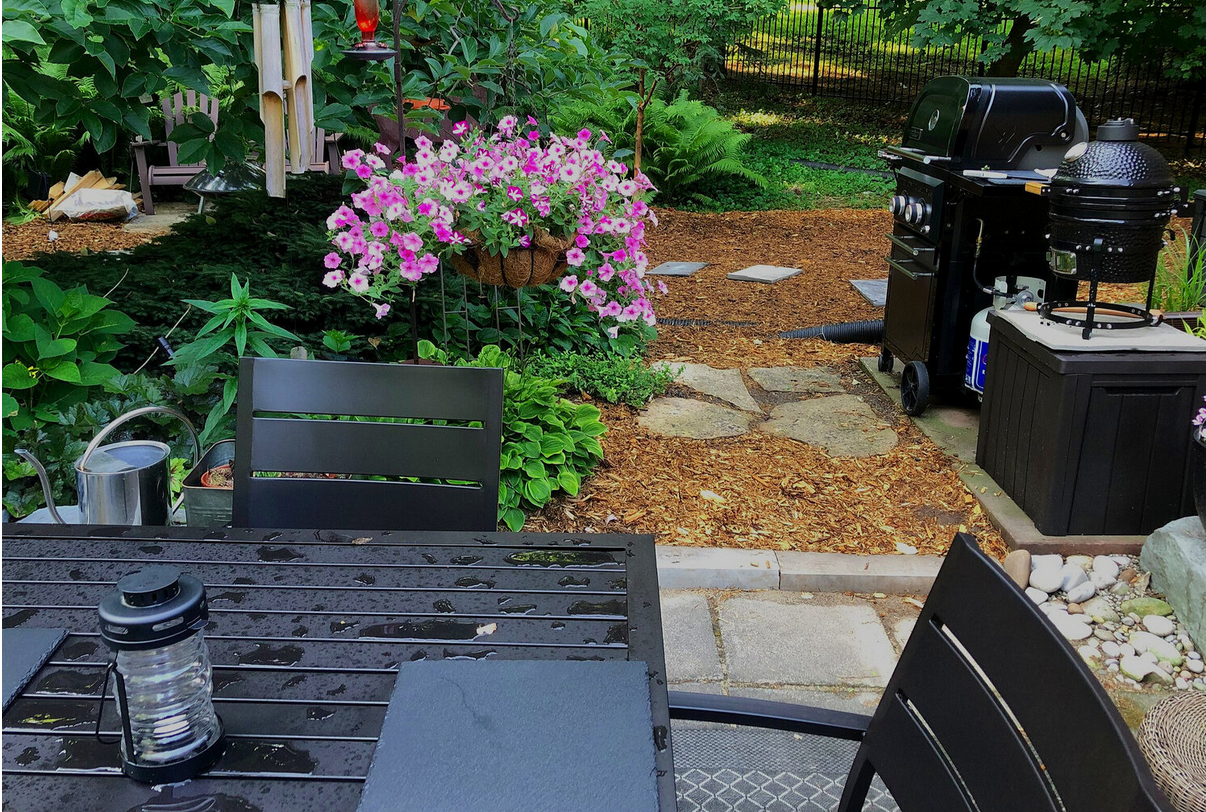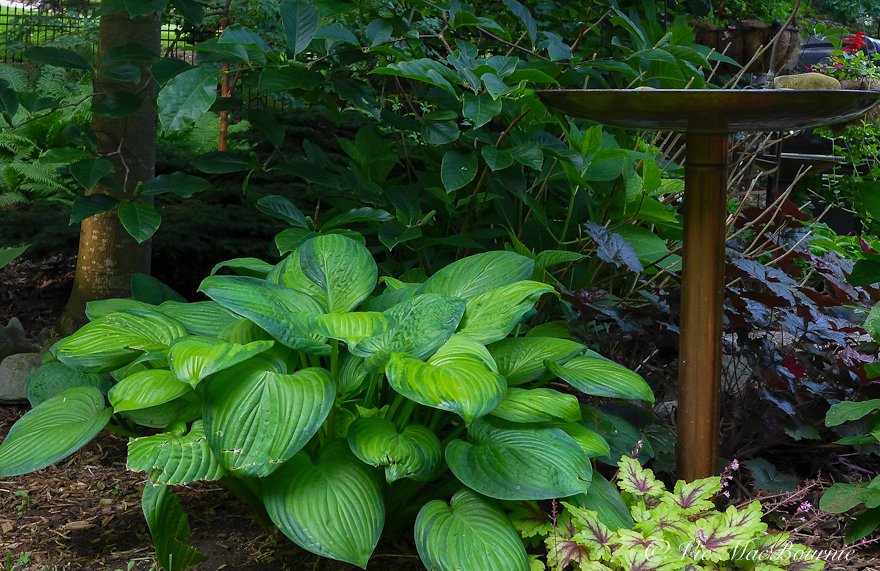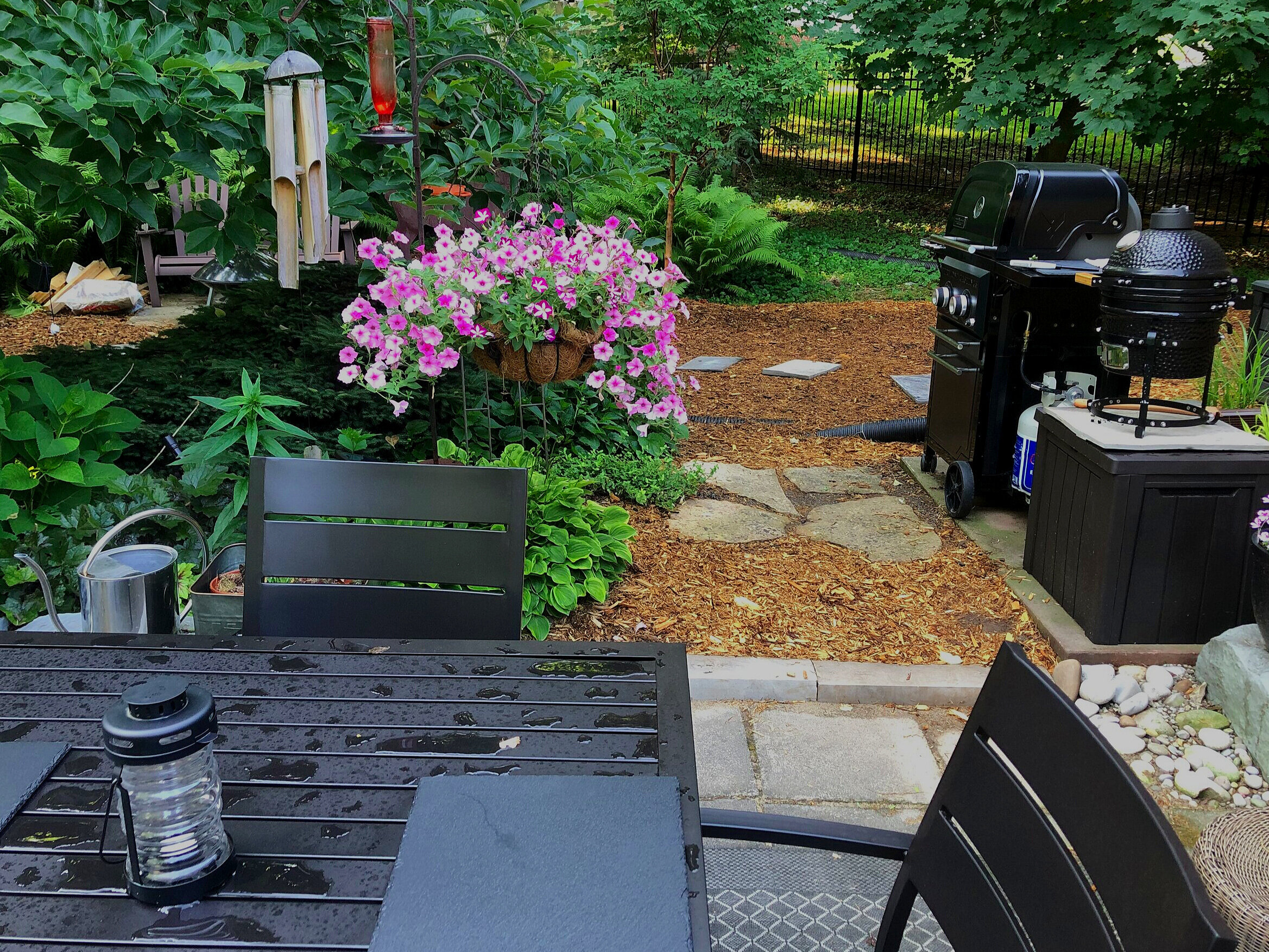Understory Gardens: Focus on sustainable west-coast landscapes
Alexa LeBouef Brooks is a west coast garden designer looking to convince people that we need a more sustainable approach to garden design in the face of climate change.
Garden designer’s favourite plants for the natural garden
Alexa LeBouef Brooks is changing the world around her, and she’s not alone.
Like so many other people her age working to protect the earth, Alexa recognizes that the environment is at a critical juncture – either something is done soon or we risk losing much of what we have in the not-too-distant future.
The 33-year-old landscape designer is fully aware of the environmental challenges that lay ahead for future generations and the precarious path humans could be facing in the future.
Alexa is part of a new breed of progressive landscape designers taking it upon themselves to reject traditional garden designs and embrace a new, more sustainable garden style – at least in the town she calls home. Her Pacific West-Coast designs specialize in developing a more sustainable, woodland or naturalized gardening approach – hence the name Understory Gardens.
(For more on West Coast garden designs and native plants, be sure to check out my post on Vancouver-Island-based Satinflower Nurseries, Native plants find a home on Vancouver Island.)
Also, if you are interested in native plants, be sure to check out my post on Gardening with Native Plants of the Pacific Northwest.
That love of woodland and natural garden designs has its roots in her childhood.
“Growing up in the Pacific Northwest my parents often brought me to the mountains or the river and seasides to go camping and exploring. From a young age I found myself in awe of our natural beauty,” Alexa explains.
“I think the development of my style of gardening grew from my desire to always be connected to the natural beauty I spent so much time in as a child. Although I embrace multiple garden aesthetics, the native and natural style of gardening keeps me rooted in the land I call home.”
Inspired by the work of Irish landscaper, author Mary Reynolds
Although her love for natural gardens has its roots in her childhood, Alexa owes much of her garden design approach to the work of famed Irish landscape designer and author Mary Reynolds who, rejected the traditional landscape design methods to focus mainly on restoring the land and habitats. She is founder of the environmental movement wearetheark.org, that encourages gardeners around the world to create more natural, sustainable gardens through the use of native plants.
If you are interested in getting more on the work of Mary Reynolds and her book Garden Awakening, you might be interested in my article Garden Awakening will change the way you garden.
Another landscape designer that has shaped Alexa’s work are the more classic designs of Miranda Brooks.
Although her passion is landscape design, Alexa’s real challenge is about combining beautiful, but ecologically sustainable landscapes for her clients.
Her long list of achievements has helped lead her to starting landscape design in 2018.
Vice chair and landscape designer for the Edmonds Architectural Design Board
Completed Edmonds Community College courses in specialty pruning and design
Member of the Plant Amnesty Gardener Referral List
9 years experience with organic Agriculture and animal husbandry
8 years experience with ornamental Horticulture
Plant Amnesty: Focus on maintaining ecology and environment
Through the excellent work of the Seattle-based, non-profit organization called Plant Amnesty, many of Alexa’s clientele are already aware of the importance of protecting the ecology of the area.
The organization’s focus is to educate the greater Puget Sound area on proper pruning, responsible gardening and land preservation.
“I find that most clients who seek gardeners and designers through Plant Amnesty have a shared interest in maintaining the integrity of our delicate ecology and environment. Even outside of my Plant Amnesty clients, when a potential client sees my business name and website, they are anticipating a particular style of gardening from my work. Most are open to the suggestions I make when designing their gardens and plugging in additional plants to an existing design as well as garden maintenance methods.
“The more I learn about the benefits of using strictly native plants, the more I turn to them,” Alexa LeBouef Brooks.
Designer is turning gardens into works of art
Alexa’s background in fine art certainly helped prepare her for the challenge
“In 2012 I received my bachelor’s degree of Fine Arts and Art History and pursued the art world in my twenties. I have always had my hands in the soil for as long as my memory serves me. I think that is why I enjoy art and art making so much, is because there is a tactile element that requires the use of hands and creativity, while getting a little messy along the way,” she explains.
“Somewhere along the journey I started getting interested in the design element of landscaping. I could use my creative skills on paper to transform beautiful outdoor living spaces. Landscape design has become the perfect marriage of all my interests in the art and landscaping world.”
Along the journey, she is playing a vital role in saving the natural environment and landscapes in her home town of Edmonds, Washington just outside Seattle, where she is the vice-chair for the Edmonds Architectural Design Board.
“I believe all homeowners should be stewards of their land, to preserve and maintain the diverse ecology of surrounding plants and species,” she explains.
Alexa is doing her part to help guide her clients along this path. Education plays an important role in her relationship both with her clients and the environment she creates for them.
“My design process includes an educational element in which I teach my clients about individual plant and seasonal needs. I like involving my clients in the design process because it inspires them to learn more about maintaining our natural environment, and their personal garden is the perfect tool to achieve this.”
I believe the natural landscape of the Pacific Northwest stirs inspiration in people of all ages to maintain its beauty.
She is quick to point out that, “responsible stewardship can also be achieved by creating designs for clients that integrate native and drought tolerant plants as well as plants that attract our resident pollinators.”
Alexa uses her extensive knowledge of the environment and use of native plants to guide her clients.
“I believe the natural landscape of the Pacific Northwest stirs inspiration in people of all ages to maintain its beauty,” she explains.
“It could be as simple as leaving most of the fallen leaves and using it as an attractive mulch for garden beds. Destructive methods include stripping the top layer of mulch and soil using powerful gas blowers and excessive raking. Not only does this negatively impact butterfly larvae populations as well as leave little nesting materials and berries for birds, but you are left with bare soil that does not retain moisture and nutrients for our increasing summer temperatures in the Pacific Northwest.”
Climate change: Awakening a new style of gardening
Alexa is the first to admit that climate change is awakening homeowners, who may have once dreamed for a certain style of garden, into realizing that a new, more sustainable approach to gardening is now needed.
“In the midst of our climate crisis and environmental destruction, Washington’s winters are bringing in more rain and colder temperatures while our summers are bringing in more drought and higher temperatures. What was a temperate climate is slowly becoming more extreme,” she explains.
“One of the biggest challenges we now face are forest and brush fires. Because of our increasing temperatures in the summer, many landscapers are implementing more California natives. The drawback is not all California natives thrive in our decreasing winter temperatures. So, instead of trying to control a shift in our plant hardiness zones, we must adapt and allow our plants to adapt. This, of course, comes with trial and often error. More and more clients are requesting drought tolerant plants in their gardens, and I am happy to oblige.”
(Be sure to check out the full story of Alexa’s Seattle-area garden design, including a list of native plants used in the design.)
Alexa’s favourite Understory trees for Pacific Northwest gardens
Acer circinatum (native Vine Maple) for its spectacular fall color and interesting structure.
Cornus nuttallii (native Pacific Dogwood) for its cascading branching and delicate flowers.
Cornus controversa 'Variegata' (giant Dogwood or Wedding Cake tree) for its gorgeous cake-like layers of branches and delicate variegated color.
Cercidiphyllum japonicum (Katsura) for its fall color and fragrance of leaves that smell like burnt sugar.
Magnolia macrophylla (Bigleaf Magnolia) for its broad leaves that provide a tropical feel.
Alexa’s favourite ground covers for Pacific Northwest gardens
Cornus canadensis (native Bunchberry dogwood) for its seasonal interest from flowers, to berries, to multi color leaves. (For more information on our native bunchberry be sure to check out my story here.)
Frageria chiloensis (native Beach Strawberry) for its fruit, flowers and evergreen interest.
Ophiopogon 'Nana' (Dwarf Mondo) for its hardy evergreen blades that can withstand heavy traffic.
Erigeron glaucus (native Seaside Fleabane) for its spring through fall blooms.
Erigeron karvinskianus 'Profusion' (Fleabane) for its delicate white and pink flowers.
Alexa’s favourite Shrubs for Pacific Northwest gardens
Vaccinium ovatum (native Evergreen Huckleberry) for its edible berries and sculptural element.
Ribes sanguinium (native Flowering Currant) for its vibrant flowers.
Arctostaphylos 'Howard McMinn' (California native Manzanita) for its red bark, bell shaped flowers and silver leaves.
Picea abies 'Pusch' (Norway Spruce) for its hot pink cones and pin cushion shape.
Rosa nutkana (native Nootka Rose), for its rose hips and just to add a bonus, Corylopsis spicata (Winter Hazel) for its winter flowers.
Incorporating natives and non-natives in the landscape
While Alexa strives to incorporate more and more native plants in her landscapes, clients needs often dictate the use of non-natives. In many cases, non-natives are already well established in the gardens.
“My designs meet the clients where they are, and I incorporate many different aesthetics that cater to the clients needs and desires. That being said, I will always see myself as a student in anything I pursue. The more I learn about the benefits of using strictly native plants, the more I turn to them, explains Alexa.
(If you are looking for more information on the importance of using native plants in our gardens, check out my comprehensive post: Why we need native plants in our gardens.
“There is a list of plants that I strictly avoid in our area. These include invasive species that drive out beneficial pollinators, degrade habitat, cause disturbance in the food web, and even chemically alter soil biology. This doesn't even cover genetically engineered plants which is an increasing technology being utilized that has known and unknown consequences. The most important act we can do as gardeners and landscapers is educate our clients on what is appropriate for our area and be cognizant of our watershed, soils and precious species.”
Alexa gives much of her success and knowledge of plants to her friend Bre Moravec.
“My friend and fellow gardener Bre Moravec, owner of Gaia Gardens is the perfect example of this. She goes the extra mile to educate herself to educate others. Because of Bre’s passion she has mentored me and other gardeners, teaching specialty pruning methods and in depth plant species knowledge and identification.”
How Covid changed the way we garden
When asked how important she thought it is for homeowners’ physical and mental health to surround themselves in a landscape they love, and how rewarding it is for her when her clients fall in love with their new gardens, Alexa responded: “It has always been important, but ever since the Covid pandemic it is more important than ever.
“There have been studies that time spent outside, specifically in a more natural setting improves sleep, lowers overall inflammation, enhances blood flow, repairs cells and tissues, and improves electrical activity in the brain. How amazing would it be if we can access this from our backdoor! I love helping my clients transform what was once an uninviting space into a space in which they and their families can retreat to, where it is safe because they know chemicals aren't being used, and they can enjoy all the benefits and pleasures that our seasons bring.
(If you are looking for more information on the importance of being outdoors in nature and in our gardens, you will want to check out my post Why kids need more nature in their lives.
And what does Alexa love most about her job?
“My relationships with my clients and time outside bring me most joy. The most difficult hurdle about this job is probably Washington’s weather. We’re known to get a lot of rain here!
For more information, or to contact Alexa about landscaping, visit her website at Understory Gardens.
If you are looking for more inspiration, you may be interested in Gardens of the Pacific Northwest.
If you are on the lookout for high quality, non-GMO seed for the Pacific North West consider West Coast Seeds. The company, based in Vancouver BC says that “part of our mission to help repair the world, we place a high priority on education and community outreach. Our intent is to encourage sustainable, organic growing practices through knowledge and support. We believe in the principles of eating locally produced food whenever possible, sharing gardening wisdom, and teaching people how to grow from seed.”
Backyard or Garden: Putting it all together
Creating outdoor living and entertaining with a backyard woodland garden begins with proper planning, but the results can be a truly enjoyable, private space that encourages outdoor living and a truly enjoyable experience.
Open Garden Tours are an opportunity to experience beautiful gardens
I love Open Garden Tours.
They provide us with an opportunity to peek behind the back gates of some of the finest gardens in our area.
They inspire us to make our gardens better, to explore new approaches and to contemplate what we think makes a garden exceptional.
Over the years, garden tours have provided me with endless inspiration. I particularly enjoy touring gardens designed and created by homeowners rather than landscape professionals, but some of the most remarkable gardens I have experienced were created by professional landscapers.
During a tour a few years ago, I remember visiting many exceptional gardens of multi-million dollar homes. Most were created and maintained by high-end professional landscape companies.
One in particular stood out – not because of what it was, but what it could have been.
Everyone who walked through the home’s swanky front gates were excited to see what awaited us as we strolled into the back of the magnificent property.
No-one expected the disappointment that greeted us - a sea of concrete, a large pool and a small cantilevered deck overlooking a woodland. That was it. I don’t recall even a single container planted up on the stairs leading to the pool.
The owners were obviously proud of their yard. They stood outside greeting visitors who offered polite praise of the back yard pool before scampering out as quickly as possible. It didn’t help that, for comparison, most of us had just toured some of the finest gardens in the area, but it was impossible to overlook the fact that this could hardly be described as a “garden.”
I’m sure there were visitors who were impressed with the yard.
The “gardeners,” however, were aghast.
And so, the question remains: What makes a garden exceptional?
To many – these homeowners included – a backyard is a place to entertain friends and family. To others, a garden is a quiet retreat under a canopy of magnificent trees.
You may have noticed that I referred to one as a “backyard” and the other as a “garden.”
Today, as urban backyards become increasingly smaller, gardens are being replaced by yards. Large decks, patios, massive outdoor kitchens, television screens and hot tubs are competing with perennial gardens, flowering trees and shrub borders for our attention.
In most cases, the plants are losing out.
Gardens are being forced out by backyard entertainment areas in many urban neighbourhoods. Obviously, this is not a good thing. Natural corridors through neighbourhoods, so vital to mammals, birds and reptiles, are shrinking. In many new neighbourhoods we are left with mini-islands of green space not large enough to sustain any meaningful life for native fauna.
It doesn’t have to be that way. With proper planning we can have it all – a place to entertain family and friends as well as natural areas in the garden for wildlife.
Let me be bold enough to make a suggestion to new homeowners: Begin with trees, not the latest high-end BBQ.
The greatest investment you can make in your yard is a small tree that will grow into a magnificent specimen, providing privacy, shade and beauty year round. For the price of a high-end BBQ, you could purchase enough young trees, shrubs and plants to set the foundation for a lovely garden that will increase your property value ten-fold in a few short years – just about the time when you’ll have to replace that BBQ with a new model.
Unlike consumer products, trees get better with age.
I’m not saying don’t buy a BBQ, build a deck, add an overhead structure or lay a new patio. I’m just suggesting you start with a garden plan whether you draw it up yourself or sit down with a professional landscaper.
Once the bones of your garden are in place, then it’s time to look at possible entertainment areas in your yard.
Surrounding these entertainment areas with gardens provides the privacy that is so sought after in many of today’s modern subdivisions. One tree may be all you will need.
Creating the garden and privacy first will surely entice you to want to spend more time outside. Even if you think a garden is not your thing, I guarantee you the experience of eating under the limbs of a tree, it’s branches festooned with outdoor lights, will go a long way to change your mind about the need for a garden.
My wife and I recently bought into this idea big time. Given the stay-at-home world that Covid brought with it, we decided it was a good idea to invest in a little outdoor luxury. We purchased not one, but two barbecues – a small, charcoal unit and a two-burner propane unit. We also added an outdoor dining table and chairs with the expectation of staying home all summer and enjoying our garden in the midst of the pandemic.
It’s already proven to be a great investment. Dining outside couldn’t be more enjoyable. French toast for breakfast on the griddle of our new Vermont Castings propane barbecue, and outstanding chicken wings from the grill of our mini Louisiana Kamado-style grill has made restaurants and take-out a thing of the past. We have a summer of new recipes ahead just waiting to sample.
Spending time outdoors couldn’t be more enjoyable. There is something very relaxing about watching nestlings take their first flights while chipmunks chase one another around your table during morning coffee.
The yard and garden coming together as one. That’s a goal we need to work toward. That just may be the recipe for happiness.

